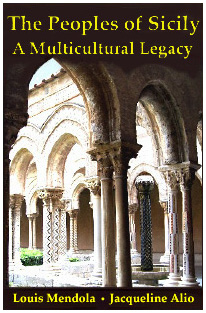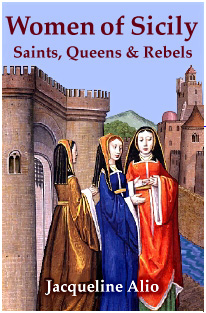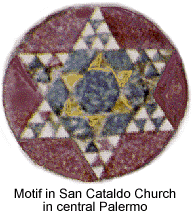...Best of Sicily presents... Best of Sicily Magazine. ... Dedicated to Sicilian art, culture, history, people, places and all things Sicilian. |
by Jacqueline Alio | ||
Magazine Index Best of Sicily Arts & Culture Fashion Food & Wine History & Society About Us Travel Faqs Contact Map of Sicily
|
We don't know the reasons for his voyage, which took at least ten years. Pilgrimage was a motive, certainly, but he probably wanted to visit the various Jewish communities or even pursue commerce. Benjamin, first and foremost, was a rabbi. His book is a work of geography comparable in scope and tone to Idrisi's, but with an emphasis on the Jewish communities rather than the Muslim ones. He is one of the first westerners to mention "China" by that name, though his travels did not take him that far east. Written in Hebrew, The Voyages of Benjamin was noteworthy for what historians have deemed its reliability regarding medieval life. It was subsequently translated into Latin and other languages. Benjamin's descriptions of Rome and Baghdad were particularly detailed. He reached Palermo toward the end of his voyage, along the return route toward his homeland, which he reached in 1172. His description of the Sicilian city is detailed, picturesque and consistent with that of Abdullah al Idrisi. He seems to have been received at the court of the young King William II. Tudela provides an informal "census" of Sicily's Jews, mentioning, for example, that there were around two hundred Jewish families in Messina in the 1170s. Palermo's Jewish community thrived until the forced conversions or voluntary deportations of 1493. The first Jews of Sicily were living at Siracusa (Syracuse) toward the end of the Greek era. In the sixth century they had a large synagogue at Palermo but this was eventually claimed by the Christians. Around 831, with the arrival of the Arabs, their lot improved somewhat but it was the Normans, arriving in 1071, who instituted religious equality, as opposed to "religious tolerance," for all citizens. The death of Emperor Frederick II in 1250 marked a sad turning point, as by then most Muslims, as well as Orthodox Christians, had been converted to Catholicism, leaving the Jews the only religious minority --though there are accounts of isolated Jewish communities converting before 1250. Wherever he went, Tudela's accounts of intellectual life, always precise, reflect his own intellect and learning, exceptional for a twelfth-century traveller. Our knowledge of medieval Judaism would be the lesser without him. About the Author: Historian Jacqueline Alio wrote Women of Sicily - Saints, Queens & Rebels and co-authored The Peoples of Sicily - A Multicultural Legacy. | |
Top of Page |


 As his name implies, Benjamin was born in the town of Tudela
in Navarre, probably around 1135. Around 1160 he set out on a journey across
the Mediterranean to the Holy Land. This pilgrimage took him through Spain
and France, through Italy to Brindisi, and then from Greece into Asia Minor.
From Jerusalem and Damascus he made his way to Baghdad, then into the Arabian
peninsula, northeast to the port of Basra, then southward around the peninsula
to Egypt, then crossing the Mediterranean to Palermo before sailing back
to Spain.
As his name implies, Benjamin was born in the town of Tudela
in Navarre, probably around 1135. Around 1160 he set out on a journey across
the Mediterranean to the Holy Land. This pilgrimage took him through Spain
and France, through Italy to Brindisi, and then from Greece into Asia Minor.
From Jerusalem and Damascus he made his way to Baghdad, then into the Arabian
peninsula, northeast to the port of Basra, then southward around the peninsula
to Egypt, then crossing the Mediterranean to Palermo before sailing back
to Spain.